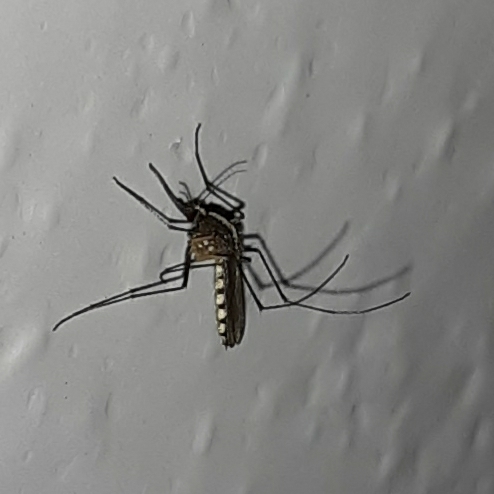Aedes atlanticus
Aedes atlanticus is a species of mosquito found primarily in the southeastern United States. It is closely related to Aedes aegypti, a well-known vector for various viral diseases such as dengue fever, Zika virus, chikungunya, and yellow fever. However, the role of Aedes atlanticus in the transmission of these diseases is less clear and subject to ongoing research.
Description[edit | edit source]
Aedes atlanticus shares many physical characteristics with its relative Aedes aegypti. It has a black and white patterned body and legs, with the females being slightly larger than the males. The species is distinguished by its unique larval habitat and some morphological features that can be identified under a microscope by experts in entomology.
Habitat[edit | edit source]
Aedes atlanticus is predominantly found in wooded, swampy areas unlike Aedes aegypti, which prefers human habitats and breeds in artificial containers. This difference in habitat preference impacts the epidemiology of the diseases they potentially transmit. Aedes atlanticus larvae are commonly found in natural water-holding containers such as tree holes and fallen leaves.
Behavior[edit | edit source]
The feeding behavior of Aedes atlanticus is similar to that of many mosquito species, with females requiring a blood meal for egg production. They are known to be aggressive biters and can feed both during the day and at night. Their peak biting activity occurs during the early morning and late afternoon.
Disease Transmission[edit | edit source]
While Aedes aegypti is a well-documented vector for several significant diseases, the role of Aedes atlanticus in disease transmission is less well understood. Research is ongoing to determine its capacity to transmit viruses such as dengue, Zika, and chikungunya. The species' preference for non-urban habitats may limit its interaction with humans and, by extension, its role in the spread of these diseases.
Control and Prevention[edit | edit source]
Controlling Aedes atlanticus populations involves managing their breeding sites, which can be challenging due to their preference for natural habitats. Eliminating standing water in man-made containers, proper management of wetlands, and the use of insecticides are common control measures. Personal protection strategies include the use of mosquito repellents, wearing long sleeves and pants, and the installation of screens on windows and doors to prevent indoor biting.
Conclusion[edit | edit source]
Aedes atlanticus is an important species of mosquito in the southeastern United States, with distinct behaviors and habitats that differentiate it from other Aedes species. While its role in disease transmission is not as prominent as that of Aedes aegypti, understanding its ecology and behavior is crucial for mosquito control efforts and the prevention of mosquito-borne diseases in areas where it is prevalent.
| Aedes atlanticus Resources | ||
|---|---|---|
|
| |
Translate to: East Asian
中文,
日本,
한국어,
South Asian
हिन्दी,
Urdu,
বাংলা,
తెలుగు,
தமிழ்,
ಕನ್ನಡ,
Southeast Asian
Indonesian,
Vietnamese,
Thai,
မြန်မာဘာသာ,
European
español,
Deutsch,
français,
русский,
português do Brasil,
Italian,
polski
Navigation: Wellness - Encyclopedia - Health topics - Disease Index - Drugs - World Directory - Gray's Anatomy - Keto diet - Recipes
Search WikiMD
Ad.Tired of being Overweight? Try W8MD's physician weight loss program.
Semaglutide (Ozempic / Wegovy and Tirzepatide (Mounjaro / Zepbound) available.
Advertise on WikiMD
WikiMD is not a substitute for professional medical advice. See full disclaimer.
Credits:Most images are courtesy of Wikimedia commons, and templates Wikipedia, licensed under CC BY SA or similar.Contributors: Prab R. Tumpati, MD


